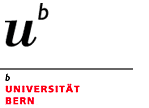Unravelling the molecular basis of membrane domain establishment
The biological context
In the simplest description of a eukaryotic cell, nucleus, cytoplasm and organelles are embedded in a phospholipidic bilayer, the plasma membrane. The plasma membrane mediates interactions between a cell and its external environment, which in multicellular organisms consists mostly of other cells. Proteins of different nature populate the plasma membrane and perform specific functions: transporters and channels mediate exchanges between compartments; receptors sense the environment and generally transduce the message; adhesion proteins establish physical connections with substrates or neighbouring cells. Generally speaking, these populations of proteins are present all along the plasma membrane. However, some protein activities need to be delimited in space. For example, receptors present on the plasma membrane of a neuron must be localized to either the dendritic or the axonal end; in an epithelial cell, different transporters sit on either basolateral or apical membrane. A protein exclusively present in a subregion of the plasma membrane is said polarly – asymmetrically – localized. Molecular fences at the plasma membrane help maintain polarity by preventing free protein diffusion. Such molecular fences have been described in several cellular contexts: in budding yeast at the level of the bud neck; in ciliated vertebrate cells, between ciliary and periciliary membranes; in epithelial cells, between apical and basolateral membranes; in neurons, between axon and soma ; in spermatozoa, at the level of the annulus.
In plants, the first membrane fence has been described in the root endodermis, between inner and lateral membranes. To understand how this barrier is formed, I have identified the CASPs, a novel group of proteins, that specifically and only localize in this membrane domain, forming a ring all around the cell (Roppolo et al., Nature 2011). The CASPs are members of a larger family of protein, the CASPL-like (CASPLs), presently uncharacterized.
Biological questions
The project proposed here aims at the study of the CASPL proteins, their site of expression (which tissue?), their localization inside the cell (plasma membrane?) and their mode of action (how do they get localized?). CASPL represent the entry point to address later the general question: how membrane domains are formed and maintained. This study will be performed in the flowering plant A. thaliana, a model for genetics and molecular studies. Studying protein localization in plants has the great advantage to allow the easy generation of several transgenic lines (>40) in few months, a situation that is hardly achievable with other model multicellular organisms. A way to understand the molecular basis of life is to study how a given mechanism has been conserved, modified or adapted during evolution. For this reason, the CASPL family will be also analysed in the moss Physcomitrella patens, whose genome as any other plant on Earth encode CASPLs (flowering plants have appeared more than 200 milions years after the mosses invaded the land!).
Methods
The techniques used for this project are of general application in molecular biology and constitute a strong background even for people that would later work in biomedicine or animal biology. These are: cloning, genotyping by PCR, transgenesis, confocal microscopy, bioinformatics, network analysis.
Supervision
You will work in a recently established group at the Botanical garden. You will be supervised directly by the project leader in all the steps of your master, from experiments to writing. You will plan your own experiments and learn how to manage a research project. This project is funded by the SNF, through an Ambizione fund granted to the project leader.
References
Roppolo D. and Geldner N. Membrane and walls: Who is master, who is servant? Current opinion in plant biology. 2012; 15 (6): 608-617.
Roppolo D. et al. A novel protein family mediates Casparian strip formation in the endodermis. Nature. 2011; 473 (7347): 380-383.
|
|
Contacts |

